
Chloe Chambers recently became the first woman to win a TGR pole position and race. The American driver sat down with ATRL’s Ellie Bishop to discuss her time in W Series, women in motorsport, and the importance of education.
March 15, 2023
At 18 years old, American driver Chloe Chambers has already gone far. From the US to Europe, she’s impressed the world with her driving in the W Series and currently races in New Zealand’s Castrol Toyota Formula Regional Oceania Championship for Giles Motorsport. ATRL chats to her about the challenges women face in motorsport and the importance of education when it comes to being a well-rounded competitor.
Let’s start with some rapid-fire! What is your favorite track that you’ve raced on?
My favorite track this year was a tie. I really liked Miami for the atmosphere and the track itself was pretty good. It was the first year running it so there’s a few tweaks that could have been done here and there. I also enjoyed being in Singapore, racing at that track, too. I guess I might have a thing for street circuits!
The ATRL Classic: Rate these berries from your favorite to least favorite. So we have raspberries, strawberries, and blackberries.
Strawberries are probably my favorite berry in general. So strawberries will have to be first. I enjoy raspberries but blackberries, I don’t eat them.
Who is the biggest inspiration for your career?
My dad. I don’t come from a racing family, but everything that my dad has been able to do with me up to this point in my career has just been amazing. We’ve been learning this whole thing together. My whole love for cars and motorsport has come from him and he’s been helping me from when I started back in 2012 to now.
Who are three drivers that you look up to?
The first one is definitely Lewis Hamilton. I’ve always loved him as a driver, as a person off track and everything that he stands for ever since I started watching motorsports. Next, Ayrton Senna – one of the greats. I’ve watched the movie Senna more times than I can even say. There’s a few people that I would want to put third, but I guess I would have to go with a classic: Michael Schumacher. I grew up watching his last few years in Formula 1 and I remember choosing him in the F1 games..
If you went on a road trip, which drivers would you want to take with you?
I really like George Russell so I would love to have him with me. It would be great just to speak with him about everything. If this counts, I would say my dad because he did drive autocross when I first started racing.
Do you have any fun superstitions or pre race rituals?
I used to when I raced in go karts, but now I feel like it’s a lot more structured the way that I race now and so I don’t have the same sort of rituals as I did. In go-karts, I had to put my gear on in a certain order for my race to go well, but sometimes it stopped working. So then I switched to changing what color gloves I use every other day.
What are the top three songs at the moment you are listening?
I’ve been listening to the Harry Styles album, Harry’s House and then Taylor Swift in all of her Taylor’s Versions. I’ve been listening to As It Was and Love Story like crazy right now.
Have you got a favorite sport or team to watch? Not racing related!
I do enjoy watching American football. I live about two hours from Indianapolis and we have season tickets to the Colts games. I also enjoy watching college football.
What is your best racing related memory?
One of my best memories was definitely getting my world record. Back in August of 2020 Porsche Cars North America had reached out to me with their idea to break this existing world record that had been set a couple years before for the 50 cone vehicle slalom which is when you take cones or some sort of marker and you drive from the left side to the right side of each of the markers. I ended up beating the existing world record by over half a second I believe. [Chloe’s time: 47.45 seconds]
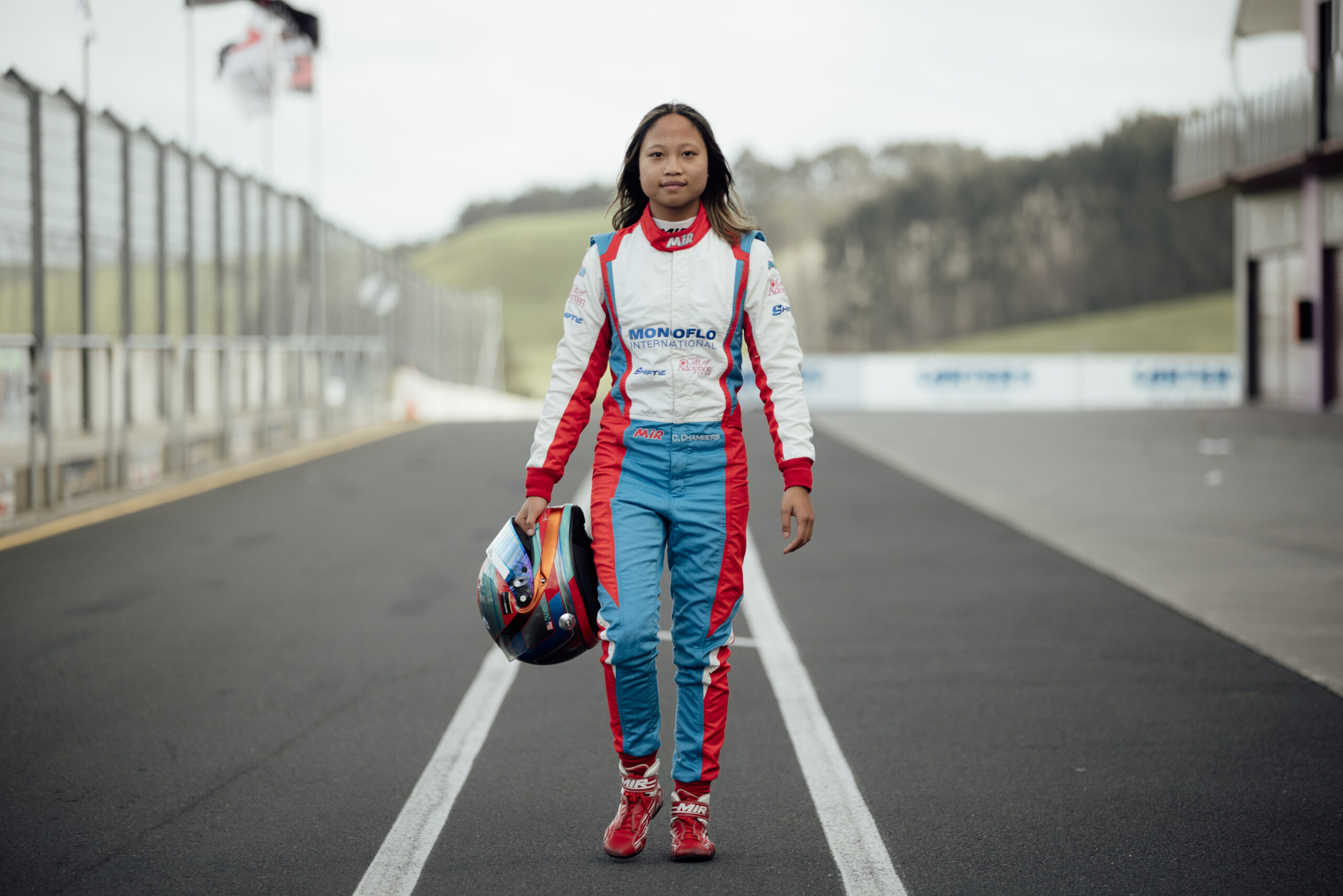
Getting into deeper questions, what is something that you would really like people to know about who you are both on and off track?
Generally, I would like people to know I am super approachable and most of the time I’ll be free to talk to anybody. A lot of people obviously don’t know who I am, so they’re kind of iffy about just approaching me and saying something. I’m here to offer advice and do whatever I can for other people in motorsport. On track, I would like people to just know that my results haven’t quite been what I wanted. There’s been a lot of bad luck, and there’s a lot of things that people don’t see. I don’t think people should take results as an end-all-be-all.
You’re young, a recent graduate from high school. Being in education at the same time as racing is a massive time commitment, how do you balance that? What has your support system been like?
I’ve been going to public school my entire life. I’ve never switched to any sort of online schooling up until this year when I started college. I started racing when I was eight years old and grew up learning the ins and outs of practicing and managing my time. Everything ended up blending together and making it really easy for me to figure out how to do school with racing. Of course, having teachers who are supportive and at least try to understand even if they don’t is so super important. My mom was a teacher so she was very strict on “Schoolwork done before you can go racing and your grades must be up before you can go” and so I definitely made sure I kept my grades up anyways. But especially with that ultimatum that I couldn’t go racing if I didn’t have good grades was a little push there. Yeah, I just wanted to get high school over with in person. I wanted to have time to spend with my friends and time to live a normal life and also go racing. I got a whole lot of support from all my friends, which was definitely super helpful in my last couple years of school.
You’ve had a very considered approach to education. Would you say that’s been actually quite crucial to then be able to manage your career outside of school?
Definitely. I am currently in college, pursuing a degree in business administration. I’m planning on using that to also aid in managing myself as well as when I’m finished racing, managing other people, managing teams, that sort of thing. So it can also lead to different career opportunities after the driving part is over. Already in my career, having worked with sponsors and doing marketing decks, I’ve learned half of what I’m going to learn in business school. But I think it is super crucial to get an education. It’s always been important for me that I have to have a Plan B. I found the best way to finish my education is to pair it with my racing.
What about your experience away from school and more in the paddock? What is it like for you being an Asian-American driver in a European dominated sport? Was there a culture shock between American and European motorsport?
My dad is British, so I was exposed to European culture from a young age. Transitioning into more Euro-centric motorsport, after having raced in North America my entire life, was relatively easy for me. For most of these races, I’ve had my dad with me, because I’m too young to go alone. Being exposed to different cultures when I was young has been helpful with that. I’m adopted and so I understand the mixing of cultures. Only my sister and I are from the same country, my brother is from Ethiopia, my mom is from Texas, my dad’s from England. Even my sister’s from the opposite end of China that I am. Growing up in this family has been a huge help in learning the cultural differences, but also, living in America and going to public school where there’s so many different cultures. Just living in the way that I do lets me learn about the world without really thinking about it. To me, it was pretty easy to go and travel around Europe.

And have you spent much time in Europe without family members?
I spent a little bit of time in Europe without them. My dad’s been at every race, but sometimes they’ll come a little bit later in the week. It gives me a couple of days to learn for myself. When I went to France, I was thrown into the deep end because all my luggage got lost! Luckily, I did learn French in school and I can speak and understand it relatively well so I was lucky it happened there. I’ve been having a lot of fun just exploring, doing different things outside of racing. Obviously, I’m racing these different circuits with the same group of people, so it’s familiar when you get to the racetrack.
You have driven both GT cars and single seaters and you have only recently made the switch from karting. Have you noticed a benefit from having a wide variety of experiences across motorsport?
Personally, it’s been beneficial to dip my toes in sports cars, but mainly focus on open wheel cars. I have driven both, but have definitely put more time into open wheel for now. I’m keeping my options open for the future. I’ve been racing the World Racing League with my sponsor, Monoflo International, in the Porsche GT4 Cayman. It’s like an entry level series where I’m helping coach some of my co-drivers and then also learn about the car and help develop the car this year and attend whatever races I can really. Having a variety of car experience under your belt will help in the future for whichever direction you go in, because then you can go wherever you want at this point.
Talking about experience in different cars, let’s focus on W Series. What was it like getting the call and preparing for the seat?
It was definitely a huge step for me coming straight from American F4 straight into Formula Regional spec cars. I also had never driven in Europe before, not even in a go kart. I’m learning the tracks, the team and how the race weekend itself works. When I first got the call about going to that test in Arizona, I was very glad to have been spotted by W Series and have them recognize my talent and be given the opportunity to potentially get a W Series seat for the year. I went into Arizona with a lot of confidence because I was one of the few drivers who had driven the car before. Then we headed out to the test in Barcelona. It was difficult for me at first, just generally learning the track and the car, plus we didn’t have a ton of seat time, just two full days of testing. During the Formula 1 race weekends, we don’t get much seat time in general. You have a 30 minute practice session to learn the track, get up to speed and then you go straight into qualifying. There’s not much time to debrief in the middle of the session or fix small things on your driving. You go out and have to figure it out on your own. If you make a mistake in practice, then you have to go into qualifying with even less track time. If you don’t know the track, then you have to use qualifying to learn the track, which means you’re probably going to be off the pace and so it puts you on the backfoot for the rest of the weekend.
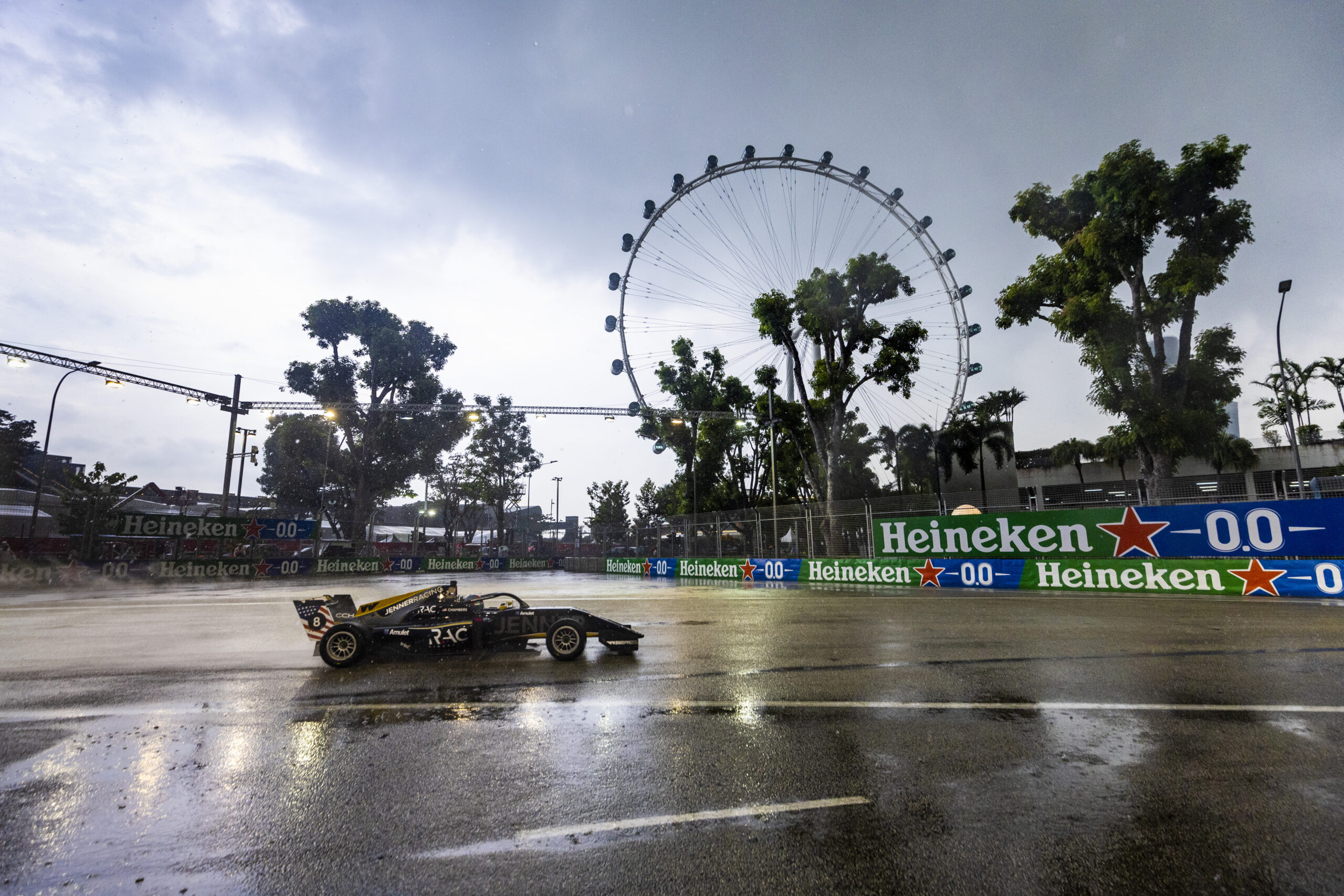
My biggest challenge is just getting enough seat time. In America, they run a different style of Formula Regional car that’s completely different to drive. The best way that I could get the testing that I needed during the summer break was by going out to New Zealand and test the Toyota Racing series cars, which are the same cars that we run. I went for about a month to get some testing in before Singapore. At this point, I hadn’t known that the season would end early. It was a bummer because I had gotten that crucial time that I needed and went into Singapore feeling so much more confident in the car. For anyone in motorsports, seat time is the biggest game changer.
Aside from finding alternative ways to get seat time, what are some of the strategies that you can use or the techniques that enable you to learn quickly or correct mistakes in the moment?
A lot of it comes down to when you’re in the car actively on track driving and you don’t have the opportunity to do a full data debrief. The biggest thing that you can do is just pull from what you’ve already experienced in the car and try to recreate that same feeling that you had when you felt that you’re going quick. I tend to learn and pick up on things pretty quickly and then also be able to apply them really quickly. During my debriefs, I do pick up a lot, but the one area where I have actually been working on this year is making those little changes on track. Just trying different things with the car, trying different lines or braking style. Ultimately, if you have the time in the car and you understand what the car will do under certain circumstances, or you just generally know what the car feels like when it’s quick, that’s probably the best and quickest way to get up to speed.
Looking within the team, you have Jamie Chadwick whom I’m sure is a massive wealth of knowledge and experience. How has it been to work with her?
It’s been a really good experience. With Caitlin too, with her being such a high profile sports person, and Jamie having so much experience with those specific types of cars, she has been really supportive. Obviously, you don’t want to give away too many tips and tricks to your competitors, but overall, if I have any questions, I can definitely go up and ask her. It’s kind of unique to the series, but with almost anyone in W Series, you can just ask them and most of the time, they’ll tell you.
It was very disappointing that the W Series ended their last season early. How did you and the grid react to that?
Obviously, no driver wants their season to be cut short. Any driver would be disappointed to see their season end early, especially due to a lack of funding. We were all disappointed but at that point in time, there was little we could do because there was such a short turnaround between Singapore and Austin. I was disappointed personally to not go to my second home race of the season and race in front of my home crowd because I was a Texan at one point. We all found out there were talks of it in Singapore, since there was an article that came out that said the W Series is under financial pressure. The drivers were briefed on what was going on and at that point in time, we were all like, “Oh, well, we’ll be fine. We’ll get the funds together for Austin. It’ll be okay.” Then Singapore ended up going the way that it did. Jamie had not quite sealed the title at that point, and so, all of us thought, “Maybe that’ll give someone an incentive to get the season finished to see who actually wins.” It was disappointing when we all heard that we would not be going to Austin. Since then, I’ve had a few messages here and there from some of the drivers just checking in and asking how everyone’s doing. It’s good to know that everyone is still supporting each other and it’s still keeping in touch. That’s one of the cool things about W Series that I’ve experienced.
With that in mind, we have the W Series and now the F1 Academy. Would you say that enough is being done to support women in motorsport, or do you feel like there is something materially missing? What’s your take on it from the inside?
For me, motorsports isn’t nearly as big globally as soccer. Right now we’re seeing more change being done just simply because there’s just more people watching it, paying attention to it. It will take time, though, but right now, there’s a lot being done, especially with a new series in the new F1 Academy.
Do you think this new Academy is the right path to get more young women into motorsport?
Any opportunity to get more seat time for junior drivers in general is the best thing that you can really do, and especially to open up more spots for female drivers, which will then inspire new generations of female drivers to do the same thing. It’s really difficult to go from karts straight to a Formula Regional spec car and so to have a Formula series that bridges that gap will be very beneficial for all the upcoming girls in karting.
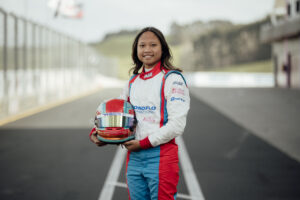
What would you say are the key issues that women have in motorsports?
I’ve always said this, especially since I’ve moved into cars, it’s magnified itself: Seat time. For any driver, seat time is going to be the most important thing. But for women in motorsport, it’s that little bit harder for them to get seat time, compared to the guys, just because there’s not as many of us. There are definitely people who want to give women a chance, but it comes down to getting those big companies or big sponsors who can actually fund women to get enough seat time in the year to make that step up into F2/3.
Do you think this new Academy is the right path to get more young women into motorsport?
Any opportunity to get more seat time for junior drivers in general is the best thing that you can really do, and especially to open up more spots for female drivers, which will then inspire new generations of female drivers to do the same thing. It’s really difficult to go from karts straight to a Formula Regional spec car and so to have a Formula series that bridges that gap will be very beneficial for all the upcoming karting females. It’ll allow more females to be in race cars at the same time, first of all, and give them more seat time leading up into W Series or even up to F2/3.
Have you noticed a slight shift in the number of girls who are getting involved in karting at a younger age?
There’s been a lot more girls racing in the United States. Four years ago, I used to go to races and be one of the only girls at a race that had 200 to 250 entries. Now, I can go into almost any racing class and see at least one girl in there. Most of them are younger, maybe 8-12 years old right now, so they’re a bit young for cars. But it’s good to see that more of them are starting and I think a lot of it has been from Formula 1 gaining popularity in the United States from DTS. With W Series, it’s a place where younger girls can look at and be like, “Look these girls are actually racing in Formula cars as well, not just go karts.” When I was growing up, I had only really seen other girls in karts, or racing sports cars. W Series is giving women a spotlight to show younger girls that women can race against each other on the Formula stage and get opportunities out of it. It’s been helping a lot of girls get into racing in general.
Do you have any advice that you would give to young girls making that foray into the world of motorsport?
If you want to get into any form of racing, karting is where you should start off. It doesn’t matter if you are super young or even if you’re in your teen years, go karting is still that starting point. The advice I always give to other starting drivers, but especially women getting into motorsport, is to take everything as a learning opportunity. You’re not going to win every race, but the ones that you lose are often the ones where you learn the most. Don’t take a loss super hard, you don’t necessarily brush it off, but don’t take it as just a pure loss. You can learn from it. Don’t wait for them to come to you like a lot of people do. They just wait around and they’re like, “Well, why isn’t anybody approaching me? Like all these other drivers?” As the driver, you have to do that yourself and make yourself known.
ABOUT THE AUTHOR

Related Articles
Hitting the Apex: Acura Grand Prix of Long Beach
After a month off, IndyCar returns for the Acura Grand Prix of Long Beach, hosted on the historic street circuit. A favorite among drivers, the track challenges with tight corners and rewards skillful qualifying. Penske’s Josef Newgarden leads the championship, while Andretti’s Kyle Kirkwood and Chip Ganassi Racing’s Álex Palou look to build on previous successes. Théo Pourchaire debuts with Arrow McLaren, filling in for the injured David Malukas.
Hitting the Apex: Shanghai International Circuit
It's Shanghai Race Week! Read on for everything you need to know about the Shanghai International Circuit.The Shanghai International Circuit, also referred to as the Shanghai Audi International Circuit for sponsorship reasons, is a motorsport race track located in the...
Navigating the Future of Formula 1: Reserve Drivers and Their Path to a Full-Time Seat
ATRL's Tiegan Batchelor explores the world of reserve drivers' F1 prospects. Oliver Bearman's standout performance highlights the talent of these drivers, yet the road to a full-time seat remains uncertain due to financial constraints and fierce competition.In the...
Stay Up to Date With The Latest News & Updates
Interested in Writing for ATRL?
Contact us now! Fill out the form below and wait for an email from us to get started.
Join Our Newsletter
Subscribe to updates when we post a new article!
COMING SOON!
Follow Us
Follow us on Twitter and Instagram @ATRacingLine

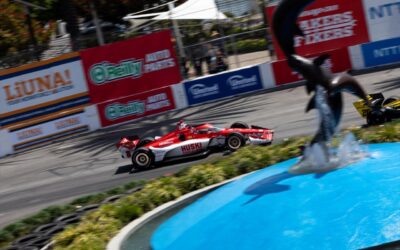
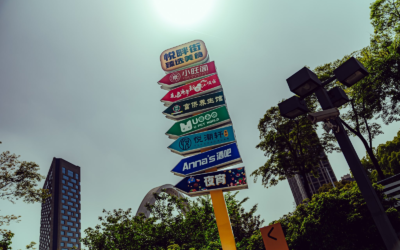

Recent Comments